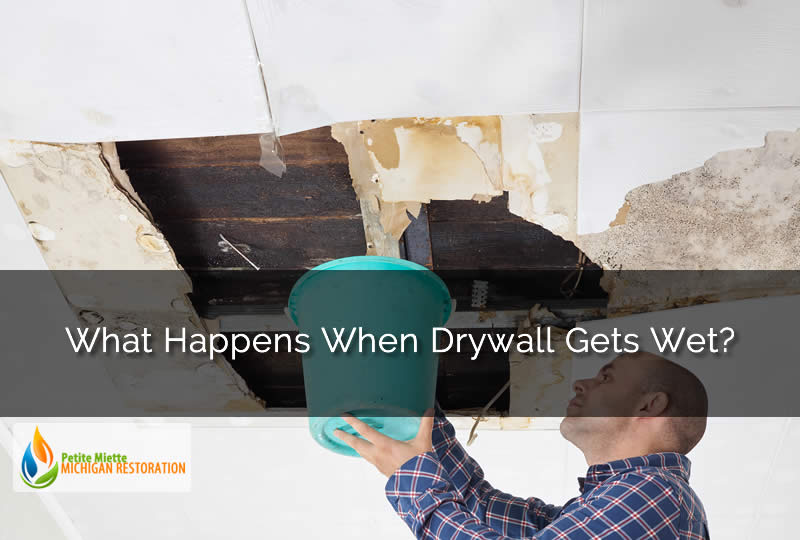Water damage can occur in a home at any time. In fact, most homes will have some sort of water damage done to them each year. While most of this water damage may not cause a problem there are times when water damage can wreck havoc on a home. One of the problems that it causes is damage to drywall which is typically installed on ceilings and walls. Although some water may not damage the drywall it’s important to be able to tell if your drywall is damaged too much by water. I wrote this article to help home owners realize just what happens when drywall gets wet in their homes.
What Happens When Drywall Gets Wet?
First of all, don’t worry if your drywall is wet. All may not be lost and thinking it’s worst case scenario may have you spending money on repairs that are not needed. There are times however when the drywall is damaged beyond repair and you’ll need a home restoration company to come in and repair any damage and remove the moisture from the home. Failing to repair and replace the drywall can lead to failures in the drywall and have it collapsing to the floor.
Is My Drywall At Risk of Failure?
One of the quick answers to the question: what happens when drywall gets wet is that it gets heavy. The weight of the water that is soaked into the drywall makes it much more heavier. Also since the gypsum in the drywall is wet it becomes structurally weaker. Weakened structure combined with the extra weight of the water on the drywall can make it collapse under it’s own weight. This is more common on drywall ceilings.

Reasons Why Your Drywall May Get Wet
There are many different reasons why the drywall in your home may get wet. Most people consider floods to be the only way a home can get water damage but in fact there are many different ways. Here are a few common ways your home can get water damage:
- Plumbing Leak / Overflowing Toilet / Other Plumbing Problem
- Waterbed Leaking
- Hot Water Heater Failure and Leak
- Spilled Water from Jugs (ie Water Fountain Jug, etc)
- Washer Failure / Other Appliance Failure
- Flood
- Over Run Bathtub
- Roof Leak
- And More
Water damage can be caused by a variety of problems which are listed above. Many of these problems are common and can occur at any time.
Small Leaks and Spilled Water on the Drywall
Carrying water and tripping can spill the water on drywall. Paint will usually protect drywall from water that is spilled such as a cup or even a gallon. The paint on the wall acts as a barrier to the water and protects the drywall. Actually for small leaks you may have the same effect. The problem occurs when the water gets to areas that are not protected by paint such as the back side of the drywall and at the floor or ceiling. Not much damage will occur for smaller amounts of water and the drywall will usually dry on it’s on. You may see some staining occur at the area where the leak was that may need primer and paint.
Heavy Leaks Such as a Roof Leak, Plumbing Disaster, or Flood
For more serious events that damage many areas of the drywall there are things you’ll need to look for when determining your next steps. One thing that happens when drywall gets wet is it soaks up water. So even if the flood has receded or the leak in your home has been fixed there is still water soaked into the drywall. This water can lead to all sorts of problems. For instance, extended moisture in the home like this can lead to mold growth in which you’ll likely need a home restoration company to remove it.
Damage to your home’s drywall can occur in any areas where water affects the home and you should make sure to check for sagging of the drywall. What happens when drywall gets wet is answered by inspecting a moisture laden piece of drywall. It begins to stain a light brown and will also sag in most cases. If the drywall is sagging it’s likely damaged beyond repair. You’ll need a home restoration company to remove and replace it.


